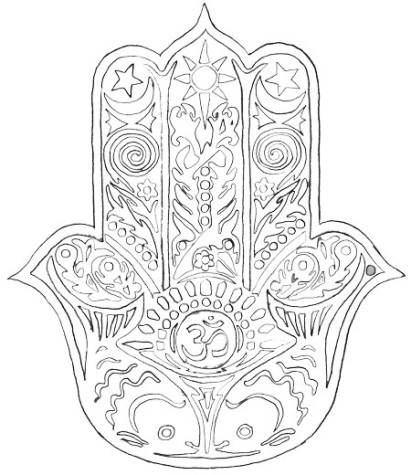Urban students discuss fine line between cultural appropriation and appreciation
Even though though it might not be talked about openly, culture appropriation impacts Urban students. But it’s hard to bring up cultural appropriation at Urban.
Given the prominence of a so-called “shutdown culture” when talking about sensitive issues around race, Urban’s climate isn’t exactly conducive to learning about how to handle race relations — a process that will inevitably include mistakes. “Shutdown culture” describes an environment wherein students feel uncomfortable speaking out about delicate topics, mostly involving social justice issues, because they fear retaliation for making an error (in language used or in ideas discussed.)
Diana Silvestri (’15) feels like “there’s always someone in one grade who is trying to constantly call people out on (cultural appropriation,)” rather than taking time to teach and explain. According to Silvestri, “[the topic has] become so polarized – but since there’s so much grey area, it becomes really difficult” to have conversations and make mistakes while talking about cultural appropriation.
When interviewed, Urban students had slightly varying definitions of cultural appropriation, but they all focused around the same idea.
“Cultural appropriation is taking one aspect of a culture and then not actually recognizing the other aspects of (that culture,)” said Adam Baron (‘18).
Shmar Williams (‘15) defines it as “the misuse of a culture without having been previously invited into that culture, and using that culture for profit or gain when you are a part of the dominant culture.”
Matt Shepherd (‘15) said that cultural appropriation is “when someone claims to have expertise…or understanding of a culture… other than their own, when really they don’t actually fully understand the cultural ideas and don’t have a full understanding of the traditional culture.”
According to Izzy Garcia (‘15), cultural appropriation at Urban is a little more specific. “Just being a minority student here at Urban, I see (cultural appropriation) as a group of privileged people who seem to want to take fashion items from a minority group of people and use it to their own advantage” noted Garcia.
“The most obvious form of cultural appropriation that I’ve seen at Urban is (taking) something that you would consider ‘ethnic’ and putting it on someone who doesn’t represent that ethnic group or minority group,” she added.
For minority students it may be difficult to approach or confront someone about cultural appropriation, but Garcia is confident that she knows the difference between cultural appropriation and appreciation, and can also list concrete examples of cultural appropriation at Urban.
Garcia added, “I remember seeing people for their yearbook pictures using an ethnic hat… [and I] honestly don’t think that’s cultural appreciation because I feel like they are using it for the purpose of humor, and when it gets to the point of making fun of something or using something because it’s humorous, it’s trying to make a statement about it that’s not necessarily nice.”
Williams added, “a big part of cultural appropriation at Urban and general white middle class teen culture is the appropriation of hip-hop culture, which originated as a part of an activist black thing to bring power to black people, so when people say slang or something from hip-hop, it’s actually black culture and I don’t think people realize that.”
So what does this mean for the Urban students trying to be sensitive to cultural appropriation? Well, it’s not always black and white. Shepherd recognizes that it’s a fine line between and cultural appropriation and appreciation and added, “It’s possible to care about something deeply even though it’s not a part of your own culture, but you first have to be appreciative and acknowledge that it’s not a part of your own culture.”
 Recent cultural appropriation movements are taking place outside of Urban on social media, such as Twitter, Tumblr, and Instagram, and include campaigns like “#ReclaimTheBindi,” a promotion of authentic bindi wearing and cultural pride. The campaign highlights the fact that popular culture and fashion – especially apparent at recent popular music festivals like Coachella – have become overrun with cultural appropriation. Examples include feathered headdresses, henna tattoos, kimonos, and bindis.
Recent cultural appropriation movements are taking place outside of Urban on social media, such as Twitter, Tumblr, and Instagram, and include campaigns like “#ReclaimTheBindi,” a promotion of authentic bindi wearing and cultural pride. The campaign highlights the fact that popular culture and fashion – especially apparent at recent popular music festivals like Coachella – have become overrun with cultural appropriation. Examples include feathered headdresses, henna tattoos, kimonos, and bindis.
Baron echoed this and adds, “You can’t just wear a bindi for fashion purposes. If you are of an ethnicity that uses or has bindis as a part of (its) culture, then go for it.” However, he noted that “if someone is wearing a bindi and isn’t Indian, but they are respecting the culture and they are very educated about the culture and they’re not just using it as a fashion statement – (then) there are some aspects of cultural appropriation but it is more appreciation.”
Silvestri noted that the whole thing is “confusing… especially with popping the [Urban] bubble [next year], I’m about to go into a college that has [little] knowledge [of this issue].”
She added that “all of my friends [outside of Urban] wouldn’t know what cultural appropriation is”, something she attributes to Urban’s unique and progressive nature.











